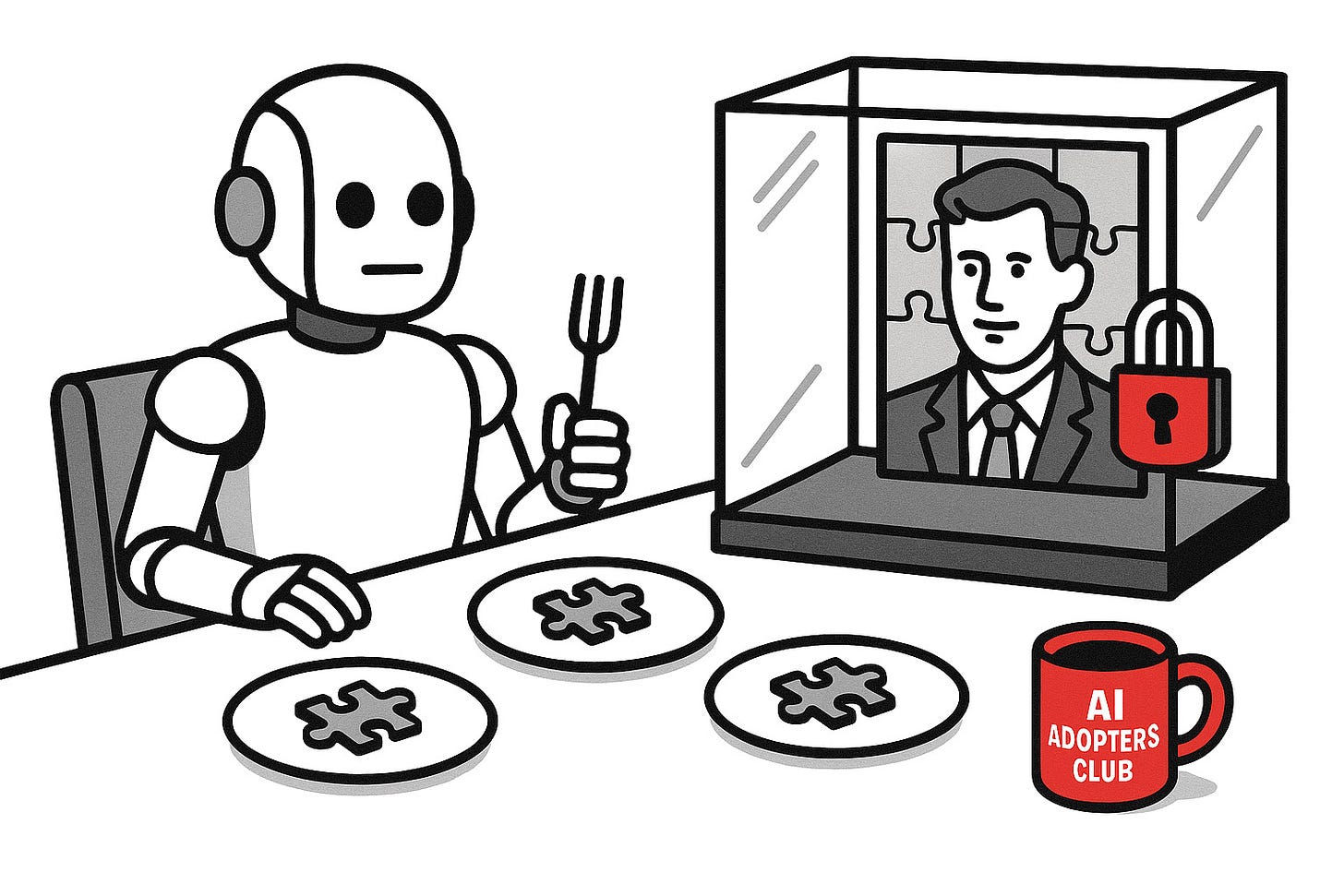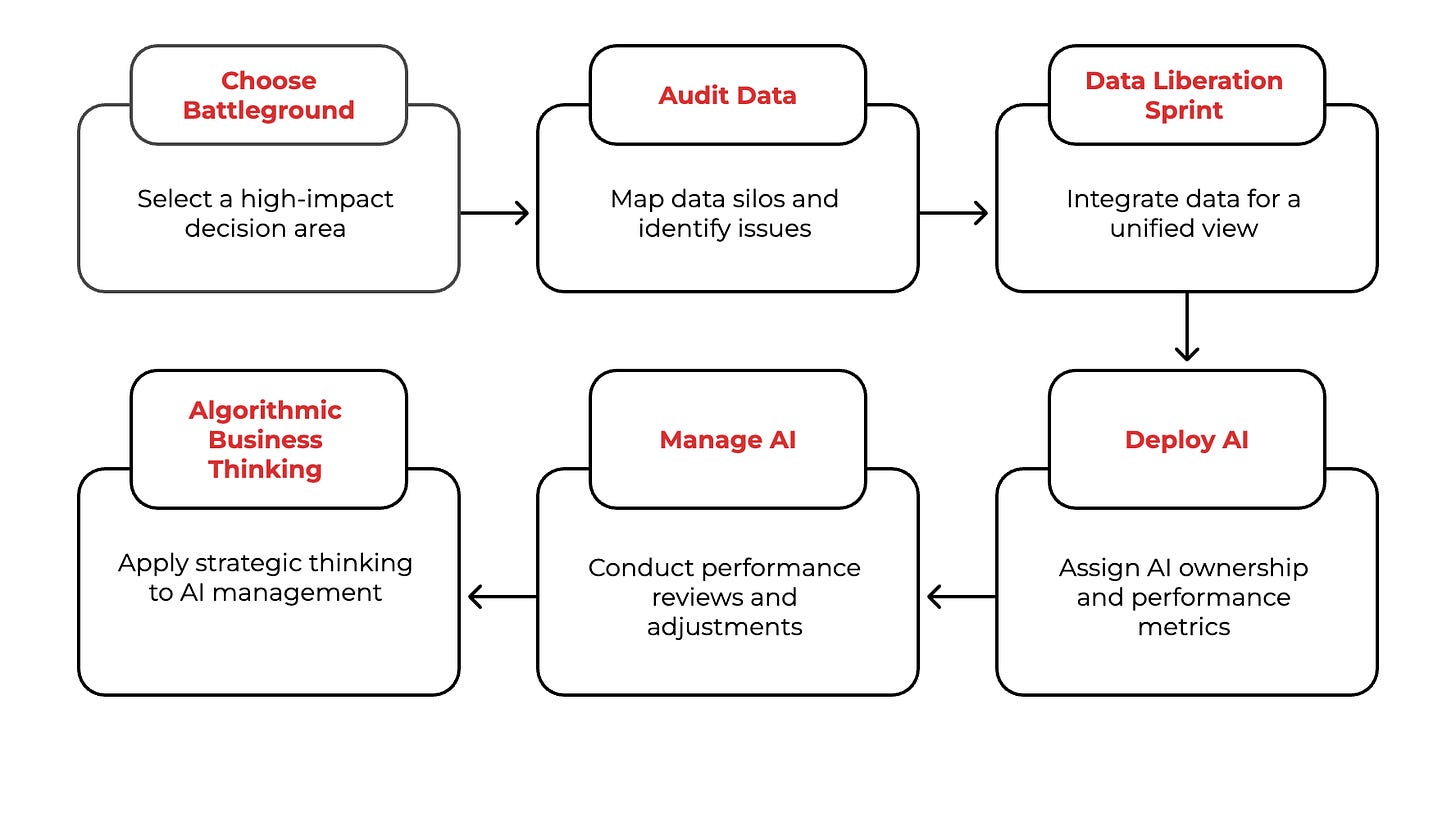Why Does Your $200K AI System Keep Failing?
The missing piece 97% of companies ignore (and how to fix it)
Hey Adopter,
In the next 5 minutes, you'll learn why your expensive AI initiatives keep failing and exactly how to fix them using a 90-day framework that's already working for the top 3% of companies.
Here's what's happening right now in most companies: A sales team invests $200K in an AI system to qualify leads. Six months later, it's generating garbage recommendations. Why? The AI is trying to make decisions using customer data from three different systems that don't talk to each other. It sees John Smith the prospect in the CRM, but can't see that John Smith already complained to support yesterday. So it recommends aggressive outreach to an angry customer.
Sound familiar?
A global survey of senior engineering leaders just revealed the brutal truth: While 93% of companies expect AI to deliver significant gains, only 3% actually achieve them.
The difference isn't the AI. It's what you feed it.
The Expensive Mistake Hidden in Plain Sight
Everyone focuses on the algorithm. Nobody talks about the data.
Ralf Echtler spent 20 years watching this pattern destroy digital transformations at companies like Daimler and Blacklane. His diagnosis is painfully simple: "Your AI is only as good as your data foundation."
Think about it. You wouldn't hire a strategist and give them only half the information. Yet that's exactly what we do with AI.
The Data Starvation Crisis
Here's what's actually happening inside most companies:
Your customer data lives in the CRM. Their purchase history sits in the ERP. Support tickets hide in another system. Marketing interactions are trapped in a fourth platform.
Your AI? It's trying to make intelligent decisions while blindfolded, getting fragments of information from disconnected systems. No wonder it fails.
The survey identified the real culprits: "legacy tools, data silos and leadership gaps." Not sexy, but devastating.
The FAIR Foundation That Changes Everything
The 3% of companies succeeding with AI follow what Echtler calls the FAIR principles. Before they even think about AI, they ensure their data is:
Skip this foundation, and you're building on quicksand.
The 90-Day Transformation Blueprint
Here's the exact framework the 3% use to turn failing AI into revenue machines:
Days 1-30: Choose Your Battleground
Pick ONE high-impact decision your business makes repeatedly. Not five. Not three. ONE.
Example: Lead qualification for your sales team.
Now audit the data behind that decision. Where does customer data live? What about their interaction history? Their support tickets? Map every silo.
Be brutally honest. If your lead scoring AI can't see that a prospect just had a terrible support experience, you've found your problem.
Days 31-60: The Data Liberation Sprint
Focus everything on making that specific dataset FAIR. Break down the silos between your CRM, support system, and marketing platform.
This isn't about building a massive data warehouse. It's about creating one clean, integrated view for one specific use case.
Marcus Spickermann from Bosch credits this focused approach with "fast-forwarding the development of our cyber-physical product offering." They didn't fix everything. They fixed what mattered.
Days 61-90: Deploy Like You Mean It
Now deploy your AI, but with a twist. Treat it like a new employee who owns a number:
The lead qualification AI owns conversion rate
The pricing AI owns win rate
The churn prediction AI owns retention
Give it a human manager. Schedule monthly performance reviews. If it's not hitting targets, retrain it or cut it.
From Algorithm to Revenue Owner
This is where most companies fail. They treat AI like software, not like a team member.
The winners use "Algorithmic Business Thinking" to manage AI like a business unit:
Decompose big goals into specific, measurable problems
Pattern match what's worked in similar situations
Abstract away the noise to focus on key drivers
Build algorithms that blend human insight with machine precision
One company replaced $50K focus groups with 50-cent AI research. But it only worked after they unified customer data from five different sources into one clean view.
The Mindset Shift That Unlocks Everything
Stop asking "What can AI do for us?"
Start asking "What data do we need to liberate first?"
Because here's the uncomfortable truth: Your AI isn't failing because it's not smart enough. It's failing because it's starving.
The 3% feed their AI complete, clean, integrated data. The 97% feed it scraps and wonder why it underperforms.
Your Next Move
Look at your highest-stakes business decision. The one that directly impacts revenue.
Now ask: Does the person (or AI) making that decision have access to ALL relevant information? Or are they making million-dollar choices based on partial data?
Fix that first. The AI success follows naturally.
The revolution isn't about better algorithms. It's about better foundations. And it starts with admitting your AI is starving.
Adapt & Create,
Kamil







100%!! The “legacy tools, data silos, and leadership gaps” line really lands. I see this all the time. AI doesn’t fix fragmentation, it just spotlights it. And it acknowledges that clean tech alone can’t make up for brittle leadership habits upstream (especially ones that made shortsighted data and workflow decisions in the first place.)
So another question from the peanut gallery that has no experience with ai other than reading about it. I’ve seen several articles about how no programming is needed to use AI to even create a new App. Is this going to be a similar experience to trying to learn about crypto and how easy smart contracts are supposed to be, when your banking knowledge is completely between paying with your debit card and online bill payments? I only became more confused the more I tried to understand it. I have no understanding of how programming is even structured, not just the language but the actual steps and choices even available to try and create something like a shortcut from complete scratch. I feel like being told that trying to write a book will be as easy as sitting down at the keyboard. Then realizing that the keyboard looks funny because I don’t know how to actually type. What is A,S,D,F,G,H,J,K,L? I thought it was as A,B,C,D,E,F,G,H,I,J? I feel like there is a gap between understanding best practices and breaking down AI into relatable knowledge such as a letter from a budget spreadsheet, then how do we make them relevant to each other? Can they continue to grow and track things to build the two items into several that becomes useful and a system on its own? Where would I even save them and would AI just remember where they are stored and continue to help me organize resources and information automatically? I love the sound of how simple it supposed to be. The ultimate User Friendly Interface, but what happens or where do you start when you never even had a user account so your understanding of even what might be possible if you figure out a plan to build a path is completely nil? I know that this is a stupid question to anyone who understands how to use the system, I just have no real understanding other than trying to understand how it works with abstract ideas from reading about it from actual technology savvy people. So ty!